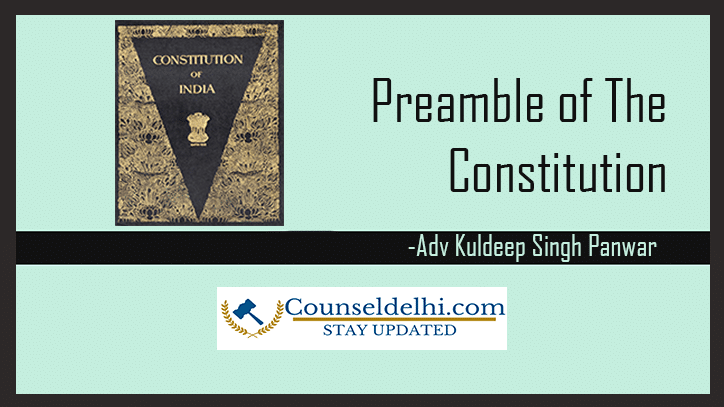What is the process of death investigation in custody?
“Death in custody is one of the worst offenses in a civilized society governed by law. When a policeman arrests a citizen, do their fundamental rights of life cease? Does the citizen’s right to life be arrested?” Can be suspended after? In fact, the answer to these questions should be “no” in a concrete way. “
D.K. Basu v. Supreme Court of West Bengal AIR 1997 SC 610 Independent investigations into custody death/torture cases have been a major problem, at least in the early stages, due to the fact that the police themselves are asked to investigate against themselves. The Supreme Court has commented on the mutual ‘brotherhood’ of the police, which impedes consequential investigations in cases of violence in custody:
In cases of police torture or death in custody, rarely visible evidence of involvement of police personnel will be available. Generally, it will only be the police officer who can explain the situation in which someone the person has died in his custody. Being bound by the bonds of brotherhood, it is not unknown that police personnel prefer to remain silent and often deviate from the truth to save their allies.”
Minister of State vs. Shyamsunder Trivedi, 1997, In many cases, death investigations in custody are later handed over to independent agencies like the CBI, or special investigation teams, in most cases due to lawsuits fought by relatives of the victims. However giving subsequent investigations to such agencies cannot assure any tangible results if the early critical stages of evidence gathering such as post-mortem, interrogation, etc., have been manipulated. Keeping in mind this problem a process of parallel magisterial investigation is envisaged immediately after the event. This is in accordance with Section 176 (1A) of the Code of Criminal Procedure, which has been inserted in the CRPC after amendment in 2005. Section 176 (1) CRPC states that a magistrate, who has the right to inquire into cases of unnatural death, may inquire into the cause of death in addition to the investigation being conducted by the police officer.
This is a general, empowering provision, which gives the magistrate the discretion to conduct such an investigation. Another fact is that such inquiry or investigation can be done by the Executive Magistrate or Judicial Magistrate. On the other hand, section 176 (1A) is a special provision to deal with cases of death, disappearance, or rape in police custody.
The provision states that in such cases, the judicial magistrate or metropolitan magistrate, in whose local jurisdiction the offense has been committed, shall conduct an inquiry in addition to the inquiry or investigation conducted by the police.
The section can be understood as follows: – This inquiry is parallel to the police investigation of death/rape/disappearance in custody. -This investigation cannot be done by the Executive Magistrate and it should be done by the Judicial Magistrate. This inquiry is mandatory (appears in section 176 (1) by the use of the word “shall”, which is different from the word “may”). Section 176 (5) inserted after the 2005 amendment empowers the magistrate to conduct such an investigation, within 24 hours of the person’s death, to send the body to the nearest civil surgeon for examination.
If it is not possible to do so, the reasons must be recorded in writing. In 1994, the Law Commission recommended the inclusion of Sections 176 (1A) and 176 (5) – in its 152nd report, considering the extremely poor rate of conviction in custody violence cases. They were inserted as a 2005 amendment a decade later.
The National Human Rights Commission has also issued guidelines for magisterial investigation, according to which the following aspects should be included. -Death of death – The manner of events and the sequence of events that led to the death Reason for death – Any person responsible for death, or suspected of any dishonesty encountered during questioning. Default of public servants responsible for death – Adequacy of treatment given to the friend.
The NHRC has also set a time limit of two months to complete the investigation by the magistrate. Non-compliance of Section 176 (1A) Despite the mandatory nature of the provision, it has little compliance.
In January 2020, the Supreme Court issued a notice on a PIL seeking direction to all states / UTs for strict implementation of section 176 (1A). Public interest litigation filed by human rights activist Suhas Chakma stated that out of 827 cases of death or missing people in police custody between 2005 and 2017, a judicial inquiry was done in only 166 cases i.e. 20% of total cases.
The petition stated that it has not been used since Section 176 (1A) came into force. It is limited to the books of law only. It has not been applied on the ground. In the Jayaraj-Benix cases of the deaths in the custody of Sathankulam in Tamil Nadu, the Madras High Court had to intervene suo moto to order an inquiry to the Kovilpatti judicial magistrate.
Registration of FIR It is mandatory to file an FIR in the case of death in custody. The Supreme Court has clarified in its decision in the case of Lalitakumari v. State of UP (2014) 2 SCC 1 that ‘registration of FIR’ is mandatory under section 154 of the Code, if the information discloses a cognizable offense and as such No preliminary investigation is acceptable under the circumstances’. Even Section 176 (1A) talks of a regular police investigation in cases of custodial death, and envisages magisterial investigation in addition to the police investigation.
As in the Sathankulam case, the police have not filed an FIR in relation to the deaths in custody till the writing of the article. The Law Commission of India is aware of this problem of the police in filing FIRs in cases of custodial deaths, and in this regard, the 152nd provision suggested that in case of failure of police to register any FIR The authority to contact the judicial authority should be given.
It has been proposed by incorporating Section 154A in the CRPC, which is as follows: “Notwithstanding anything in section 154A, section 154 : (1) Any person (including Legal Aid Center, or NGO, or any friend or relative) on record on behalf of an officer in charge of a police station in the cases referred to in sub-section (1) on record Unhappy over being denied, one can file a petition giving such information:
(A) Before the Chief Judicial Magistrate, in matters of custody other than the death of the victim, or. (B) In cases of offenses relating to the death of a victim in custody, before the Sessions Judge.
(2) The Chief Judicial Magistrate or Sessions Judge, if satisfied after a preliminary inquiry that prima facie is a case, may investigate the complaint himself or to any other Judicial Magistrate or Additional Sessions Judge, as the case may be, Instructions may be given, and then the ministerial officer of the court is directed to make a complaint to the competent court regarding the offense.
(3) Notwithstanding anything contained in section 190 of the Code of Criminal Procedure on a complaint made under sub-section (2), the competent court shall take cognizance of the offense and shall try the same.
(4) The Chief Judicial Magistrate or Sessions Judge may seek the assistance of any public servant or authority as they may think fit to conduct an inquiry under sub-section (2).
“Inclusion of this provision, following the recommendations of the Law Commission of India, will resolve the problem of delay in filing FIRs with judicial intervention at the behest of the aggrieved person or any public partner. Notice to the Human Rights Commission In 1993, the National Human Rights Commission issued general instructions that within 24 hours of death in custody, the Commission should be informed about it. All reports, including post mortem, videography, and magisterial inquiry report should be sent within two months of the incident. – Video record and photography instructions of post-mortem proceedings The NHRC has issued guidelines to all states for videography of post mortem in cases of custodial deaths and sending cassettes to the commission.
The videography and photography of the post-mortem should be as follows: –
- The detailed findings of the post-mortem should be recorded, especially the marks of injury and violence, which may suggest torture in custody. ii) Video graphic evidence should confirm the findings of the post-mortem test (recorded in the post-mortem report), in order to detect any undue influence or concealment of material information. iii) If necessary, an independent review of the post-mortem report is done later.
- The Commission has prepared a model autopsy form for cases of custodial death in view of states’ opinions, discussions with experts in the field, and the UN Model Autopsy Protocol. Do the prosecution of police officers accused of custodial torture require approval under Section 197 CrPC?
The Supreme Court has stated in the case of Devinder Singh and others v. Punjab State Throw CBI that protection of sanction under Section 197 CrPC is not available for offenses that have no relation to official duties. In this case, a bench of Justices V Gopala Gowda and Arun Mishra has held that sanction for prosecution is not necessary for prosecution in cases of fake encounters and torture in custody. “The preservation of sanction is an assurance for an honest officer to perform his duty honestly and his ability to fulfill the public duty, ” the bench said.
The apex court has held that “public servant does not have the right to engage in criminal activities”, and that protection under Section 197 CrPC. is to be “narrowly and in a restricted manner”. The court stated that in order to claim protection under section 197 CrPC., it would have to be proved that the act was linked to official duties. The Law Commission of India has taken note of the fact that in several cases of custodial torture, the matter of the requirement of sanction under Section 197 CrPC has been raised by the accused authorities, after which it was recommended to put an explanation in the said section: “For the avoidance of doubt, it is declared that the provision of sanction does not apply to any offense committed by a judge or public servant, in relation to a person in his custody, an offense committed on his body. Nor shall it be permitted for any offense in which the right has been abused. “However, the recommendation made in the 152nd report has not been acted upon.





